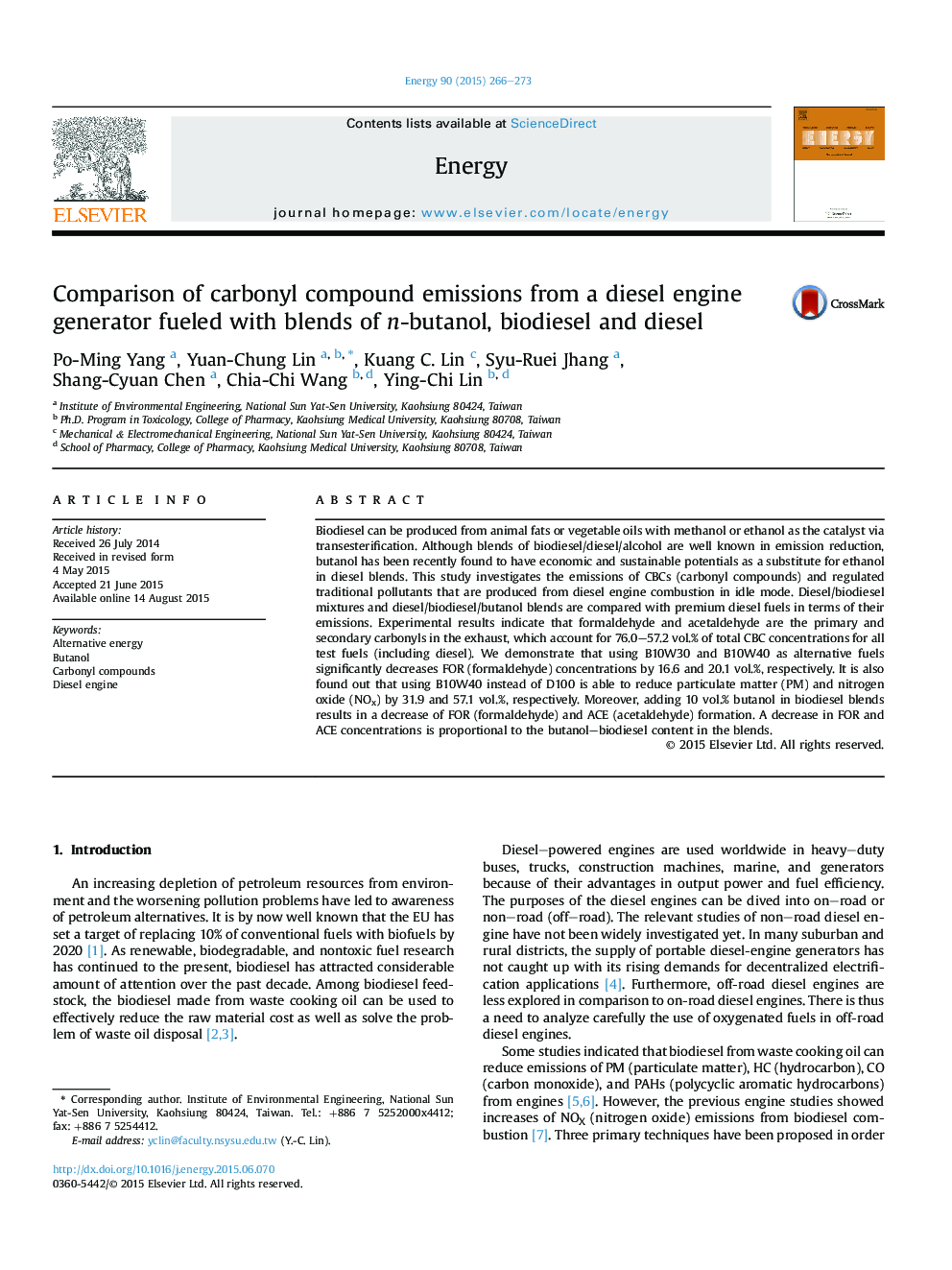| Article ID | Journal | Published Year | Pages | File Type |
|---|---|---|---|---|
| 1731732 | Energy | 2015 | 8 Pages |
•Blends are newly developed for diesel/biodiesel/butanol.•Waste cooking oil is used for biodiesel production.•Formaldehyde, acetaldehyde and acrolein are the most abundant products.
Biodiesel can be produced from animal fats or vegetable oils with methanol or ethanol as the catalyst via transesterification. Although blends of biodiesel/diesel/alcohol are well known in emission reduction, butanol has been recently found to have economic and sustainable potentials as a substitute for ethanol in diesel blends. This study investigates the emissions of CBCs (carbonyl compounds) and regulated traditional pollutants that are produced from diesel engine combustion in idle mode. Diesel/biodiesel mixtures and diesel/biodiesel/butanol blends are compared with premium diesel fuels in terms of their emissions. Experimental results indicate that formaldehyde and acetaldehyde are the primary and secondary carbonyls in the exhaust, which account for 76.0–57.2 vol.% of total CBC concentrations for all test fuels (including diesel). We demonstrate that using B10W30 and B10W40 as alternative fuels significantly decreases FOR (formaldehyde) concentrations by 16.6 and 20.1 vol.%, respectively. It is also found out that using B10W40 instead of D100 is able to reduce particulate matter (PM) and nitrogen oxide (NOx) by 31.9 and 57.1 vol.%, respectively. Moreover, adding 10 vol.% butanol in biodiesel blends results in a decrease of FOR (formaldehyde) and ACE (acetaldehyde) formation. A decrease in FOR and ACE concentrations is proportional to the butanol–biodiesel content in the blends.
